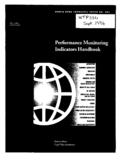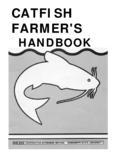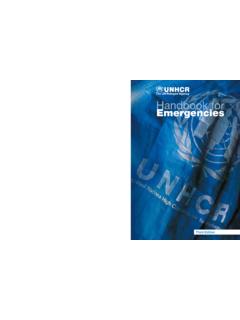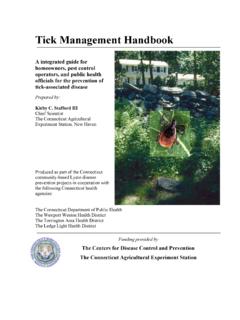Transcription of DIMETHOATE - Food and Agriculture Organization
1 FAO SPECIFICATIONS AND EVALUATIONS FOR AGRICULTURAL PESTICIDES DIMETHOATE O,O-dimethyl S-methylcarbamoylmethyl phosphorodithioate TABLE OF CONTENTS DISCLAIMER INTRODUCTION 1 PART ONE SPECIFICATIONS FOR DIMETHOATE 2 INFORMATION 3 TECHNICAL MATERIAL (MAY 2005) 4 TECHNICAL CONCENTRATE (MAY 2012) 6 EMULSIFIABLE CONCENTRATE (MAY 2012) 8 PART TWO EVALUATION REPORTS 11 2001 FAO EVALUATION REPORT ON DIMETHOATE 12 2004 FAO/WHO EVALUATION REPORT FOR DIMETHOATE 23 2011 FAO/WHO EVALUATION REPORT FOR DIMETHOATE 28 DISCLAIMER0F1 FAO specifications are developed with the basic objective of promoting, as far as practicable, the manufacture, distribution and use of pesticides that meet basic quality requirements.
2 Compliance with the specifications does not constitute an endorsement or warranty of the fitness of a particular pesticide for a particular purpose, including its suitability for the control of any given pest, or its suitability for use in a particular area. Owing to the complexity of the problems involved, the suitability of pesticides for a particular purpose and the content of the labelling instructions must be decided at the national or provincial level. Furthermore, pesticides which are manufactured to comply with these specifications are not exempted from any safety regulation or other legal or administrative provision applicable to their manufacture, sale, transportation, storage, handling, preparation and/or use.
3 FAO disclaims any and all liability for any injury, death, loss, damage or other prejudice of any kind that may arise as a result of, or in connection with, the manufacture, sale, transportation, storage, handling, preparation and/or use of pesticides which are found, or are claimed, to have been manufactured to comply with these specifications. Additionally, FAO wishes to alert users to the fact that improper storage, handling, preparation and/or use of pesticides can result in either a lowering or complete loss of safety and/or efficacy.
4 FAO is not responsible, and does not accept any liability, for the testing of pesticides for compliance with the specifications, nor for any methods recommended and/or used for testing compliance. As a result, FAO does not in any way warrant or represent that any pesticide claimed to comply with a FAO specification actually does so. 1 This disclaimer applies to all specifications published by FAO. FAO SPECIFICATIONS AND EVALUATIONS FOR DIMETHOATE Page 1 of 29 INTRODUCTION FAO establishes and publishes specifications* for technical material and related formulations of agricultural pesticides, with the objective that these specifications may be used to provide an international point of reference against which products can be judged either for regulatory purposes or in commercial dealings.
5 Since 1999 the development of FAO specifications follows the New Procedure, described in the 5th edition of the Manual on the development and use of FAO specifications for plant protection products (FAO Plant Production and Protection Page No. 149). This New Procedure follows a formal and transparent evaluation process. It describes the minimum data package, the procedure and evaluation applied by FAO and the Experts of the FAO/WHO Joint Meeting on Pesticide Specifications (JMPS). [Note: prior to 2002, the Experts were of the FAO Panel of Experts on Pesticide Specifications, Registration Requirements, Application Standards and Prior Informed Consent, which now forms part of the JMPS, rather than the JMPS.]
6 ] FAO Specifications now only apply to products for which the technical materials have been evaluated. Consequently from the year 2000 onwards the publication of FAO specifications under the New Procedure has changed. Every specification consists now of two parts namely the specifications and the evaluation report(s): PART ONE: The Specification of the technical material and the related formulations of the plant protection product in accordance with chapter 4, 5 and 6 of the 5th edition of the Manual on the development and use of FAO specifications for plant protection products.
7 PART TWO: The Evaluation Report(s) of the plant protection product reflecting the evaluation of the data package carried out by FAO and the JMPS. The data are to be provided by the manufacturer(s) according to the requirements of Appendix A, annex 1 or 2 of the Manual on the development and use of FAO specifications for plant protection products and supported by other information sources. The Evaluation Report includes the name(s) of the manufacturer(s) whose technical material has been evaluated. Evaluation reports on specifications developed subsequently to the original set of specifications are added in a chronological order to this report.
8 FAO specifications under the New Procedure do not necessarily apply to nominally similar products of other manufacturer(s), nor to those where the active ingredient is produced by other routes of manufacture. FAO has the possibility to extend the scope of the specifications to similar products but only when the JMPS has been satisfied that the additional products are equivalent to that which formed the basis of the reference specification. Specifications bear the date (month and year) of publication of the current version. Dates of publication of the earlier versions, if any, are identified in a footnote.
9 Evaluations bear the date (year) of the meeting at which the recommendations were made by the JMPS. * NOTE: publications are available on the internet at FAO SPECIFICATIONS AND EVALUATIONS FOR DIMETHOATE Page 2 of 29 PART ONE SPECIFICATIONS DIMETHOATE Page DIMETHOATE INFORMATION 3 DIMETHOATE TECHNICAL MATERIAL (MAY 2005) 4 DIMETHOATE TECHNICAL CONCENTRATE (MAY 2012) 6 DIMETHOATE EMULSIFIABLE CONCENTRATE (MAY 2012) 8 FAO SPECIFICATIONS AND EVALUATIONS FOR DIMETHOATE Page 3 of 29 DIMETHOATE INFORMATION ISO common name DIMETHOATE Synonyms EI 12880, L 395, BAS 152, OMS 94, OMS 111, ENT 24 650, chemathoate, cygon, fosfamid, cekuthoate, daphene, devignon, dimet, dimethogen, trimetion Chemical names IUPAC O,O-dimethyl S-methylcarbamoylmethyl phosphorodithioate, 2-dimethoxyphosphinothioylthio-N-methyla cetamide CA O,O-dimethyl S-[2-(methylamino)]
10 -2-oxoethyl] phosphorodithioate Structural formula PSCH3 OCH3 OSCH2 CONHCH3 Molecular formula C5H12NO3PS2 Relative molecular mass g/mol CAS Registry number 60-51-5 CIPAC number 59 EEC number 200-480-3 Identity tests HPLC retention time (CIPAC E, p. 69); IR spectrum in CCl4 or CS2 solution (CIPAC Handbook H, 1998, p. 155).

















